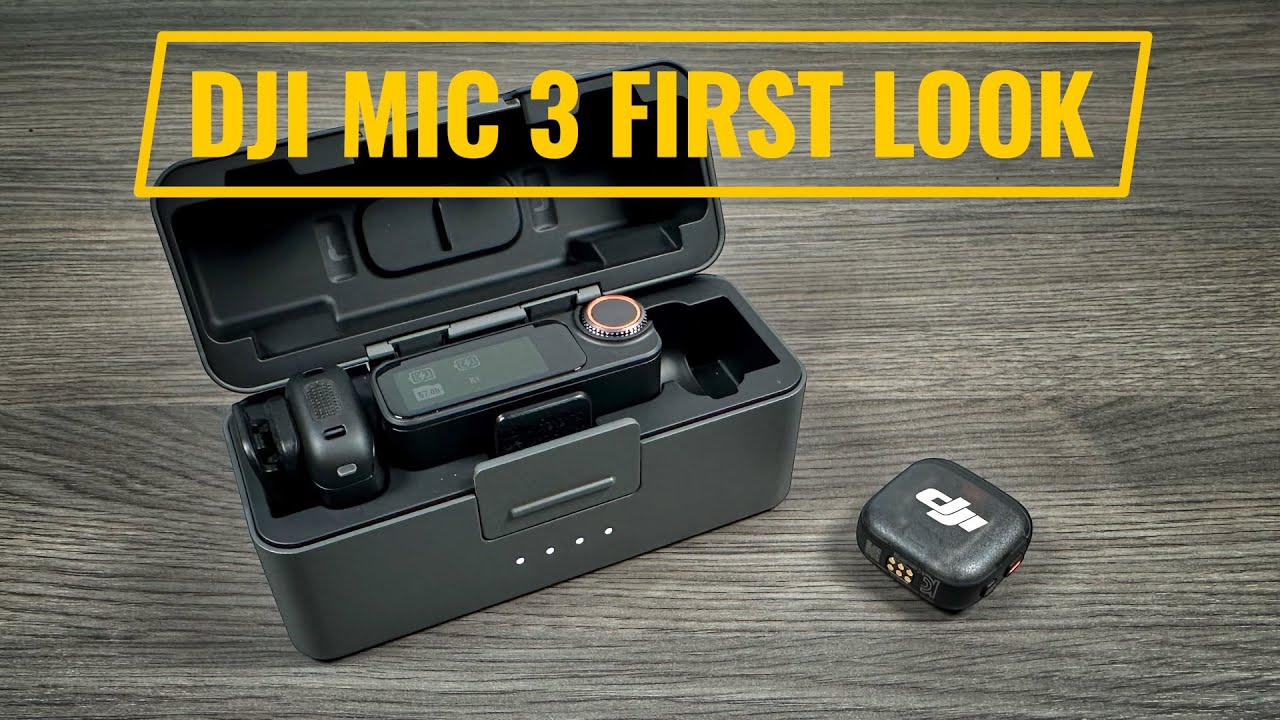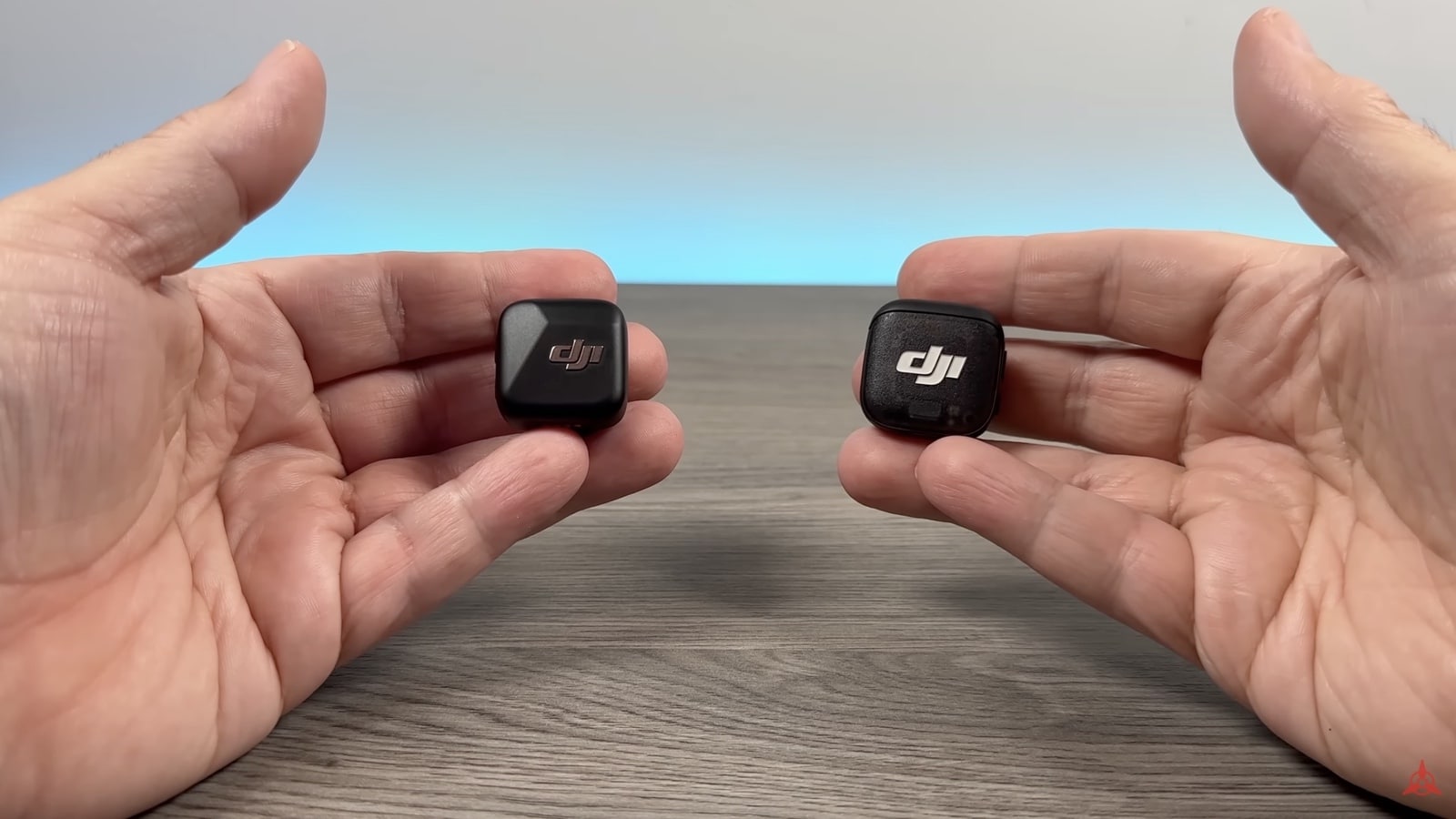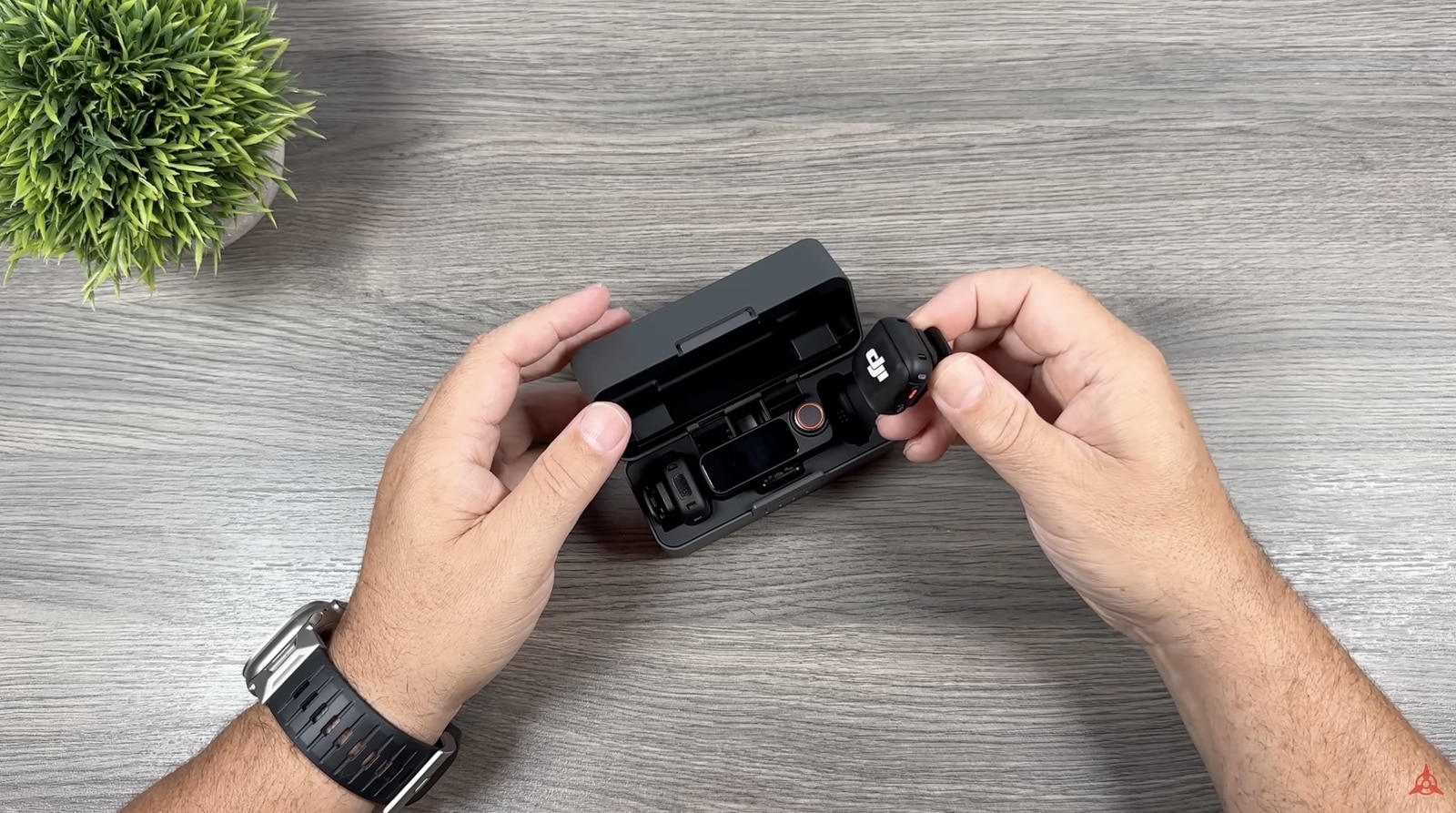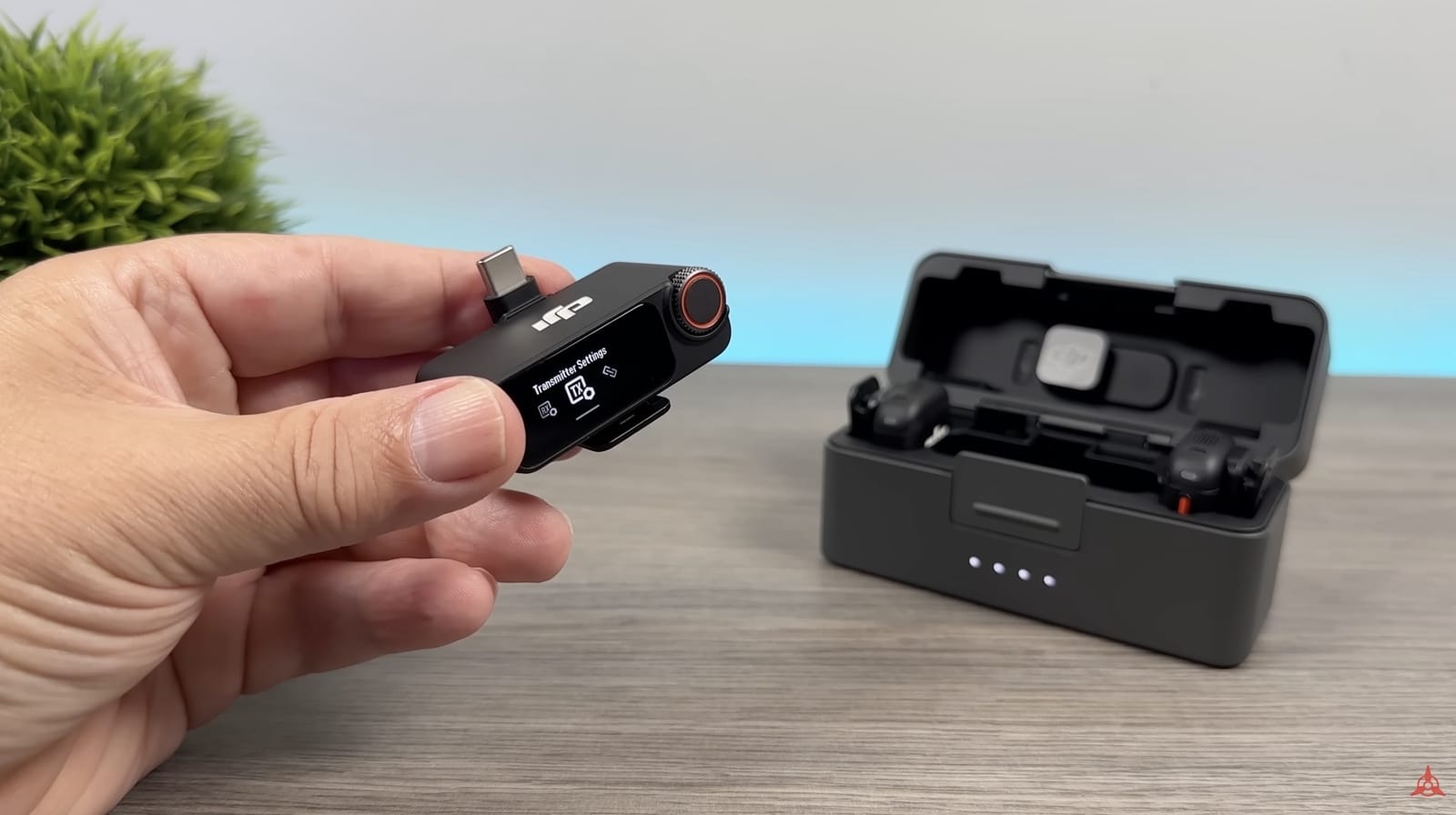DJI Mic 3 – Overview and New Features of Wireless Microphone

Good day folks. Shawn here from Air Photography. DJI has launched its next-generation microphone, the new DJI Mic 3. It brings many enhancements and features while keeping a form factor very similar to the Mic Mini. Looking at the charging case, it’s also familiar—somewhere in size between the Mic 2 and the Mic Mini. I’ll put the other ones here so the size difference is clear: this one is the Mic 2, and out front is the Mic Mini, with the new case landing right in the middle.
Design and case
Just like previous generations, there are LEDs on the front to indicate remaining power, and a USB connector at the back. The transmitters have a sleek new design and are similar in size to the Mic Mini. The new Mic 3 transmitters come in at 16 g, making them extremely lightweight. They now feature a simple two-button layout. One upgraded feature is removable clips that are held on with magnets. I really like this because if the included magnet is being used, the clip can be left off to reduce bulk.

It’s a very secure connection, so there’s no worry about it coming off. The way they lock in allows the transmitter to spin, which can be beneficial depending on how it’s pinned. That way, the microphone can be oriented in the optimal direction. Of course, a magnet is included if mounting magnetically is preferred.
Included accessories
When purchased, it includes a total of four wind protectors—two gray and two black—so a color can be chosen to blend in better. They simply clip over the top.
Now, this charging case has a few unique features, and then we’ll get into upgraded features of the microphones themselves. At the top, there are storage compartments. For example, if the magnetic microphone clips aren’t needed, both can be stored in the lid. Conversely, if the magnets won’t be used, they can also be stored neatly at the top out of the way. There’s even a spot to hold the included audio cable. It fits right in the top, with little grooves it sits in. This way, the audio cable can always come along, whether it’s needed or not. In addition, if the windscreen protectors are installed, both transmitters will still fit inside and the case will close comfortably. Everything needed for an audio session can be stored in the case.
Receiver updates
The receiver is very similar to that of the Mic 2. There’s a screen on the front to adjust settings, a dial for control, a headphone jack, and an output port. As before, different attachments can be added. By default, it comes with USB-C, and there’s a Lightning adapter available for older iPhones that must be purchased separately. A nice new addition is a lock button.
When inserting an adapter like USB-C or Lightning, it locks in place so it won’t accidentally come loose when plugged into a port—something that could happen in the past. To remove it, press the lock button and it slides right out. If an adapter isn’t being used, there’s a spot in the case to store it, and a plate can be installed instead. Another new feature is that the included cable and the receiver now support locking cables. If there’s concern about a cable becoming detached, it can be secured so it won’t come undone. If specific cables are preferred, the port supports both locking and non-locking types. That covers the main physical changes.

Connectivity and range
Let’s get into some of the new features and enhancements the Mic 3 offers. One of the biggest changes is that the receiver can now connect up to four transmitters. While the average creator may not need that, it’s great for interview-style shoots with multiple guests. Extra transmitters can be purchased and paired directly to one receiver. Additionally, a single transmitter can connect to up to eight receivers. That can be beneficial for multicam shoots or if extra receivers are needed for audio monitoring. Overall, the Mic 3 is extremely flexible in how it can be used. These microphones have a range of 400 meters with interference-resistant transmission. It supports frequency hopping, switching between 2.4 GHz and 5 GHz depending on the scenario, which helps in environments like trade shows and large venues with a lot of interference. The Mic 3 will still provide nice, stable audio.
Audio features
Another new feature is tone presets. There are three: Normal (good for everyday recording), Bright Voice (enhanced high frequencies for clear, more transparent sound without harshness), and Rich (boosts low frequencies for a solid sound without muddiness). Depending on the filming situation, there are a couple of helpful voice preset options. The DJI Mic 3 also supports lossless audio transmission.
This is disabled by default, but when enabled in settings, audio from the transmitter to the receiver is sent as 48 kHz 24-bit uncompressed audio to preserve higher quality—great for voiceovers or ambient sounds. Just like the DJI Mic 2, the Mic 3 supports internal 32-bit float recording. It’s upgraded to allow recording dual audio files to internal storage. In settings, it can be set to record the original audio file or both the original and an enhanced audio file.

Processing and control
The Mic 3 features adaptive gain control with three modes: Off, Automatic, and Dynamic. In Automatic mode, it helps prevent clipping and is suitable for environments with a lot of audio fluctuation, smoothing out the audio and suppressing sudden spikes. Dynamic mode adjusts the overall dynamic range based on input levels, so it can be set to what suits the situation best. The DJI Mic 3 offers high-precision timecode and two levels of noise reduction. Basic is good for indoor use to reduce hums and background noise from fans and air conditioning. Strong is suitable for noisy outdoor environments, but using Strong could reduce verbal clarity, so it’s best for truly noisy scenarios.
File transfer and remote
Because the transmitters no longer have a USB-C port, transferring internal recordings can be done in two ways. They can connect directly to the Mimo app to download files, or the transmitters can be placed in the case and the case can be plugged directly into a USB-C port on a laptop, computer, tablet, or smartphone. For example, with an iPad, plugging in the charging case shows both transmitters as drives, allowing easy copying of audio files. If only a single transmitter is purchased, it comes with an independent charging cradle that can also plug directly into a USB-C port to transfer audio files. As with previous generations, the transmitter can also be used as a remote to trigger recording on supported devices. These transmitters fully support Osmo Audio, so they can connect without the receiver to devices such as the Action 5 Pro, the new Osmo 360, and the Pocket 3.

Lavalier note
One thing missing from the Mic 3 is the ability to connect a lavalier mic. Some people need that audio jack in a transmitter. In that case, if a microphone system capable of using a lavalier is required, the DJI Mic 2 is probably the best option. It was a nice feature of the Mic 2, but it’s something I never really utilized. Personally, the smaller form factor is preferred. The DJI Mic 2 will still be available for purchase, and it remains an excellent microphone system. With all that out of the way, let’s go do some audio samples to hear how they sound.
Audio samples
All right, now for some audio samples. The DJI Mic 3 is connected directly to the Osmo Action 5 Pro. Afterward, a sample with Osmo Audio connected wirelessly directly to the camera will be recorded. Noise cancellation is off right now, and this is just the normal audio.
Overall, the new form factor is really pleasing. Personally, the smaller form factor is preferred over having a microphone jack for a lavalier. Some people will miss that, but for this use, the smaller form factor is the better fit. Now noise cancellation will be enabled to hear the difference. It should reduce some background ambient noise, which is sometimes desirable and sometimes not.
There’s a highway off to the right, and lots of crickets and birds chirping. Noise cancellation is now turned on.
Much of the background noise should be quieter. A little may still be heard because it’s set to gentle/soft—the lowest level. Strong is only really good for very noisy environments and isn’t something to use all the time because it can slightly distort the voice. So again, this is the DJI Mic 3 connected to the Action 5 Pro, plugged directly into the side with noise cancellation turned on. Now the DJI Mic 3 is paired to the Action 5 Pro via Osmo Audio, and the audio should sound very similar.
At close distance like this, there isn’t going to be much difference. The benefit of using a receiver in this situation is range; if there’s going to be distance from the camera, a receiver will provide better range and better interference protection in busy RF environments. Sometimes Bluetooth or similar wireless connections can experience interference. So again, this is an audio sample of the DJI Mic 3 connected to the DJI Osmo Action 5 Pro via Osmo Audio. So yeah folks, that is the new DJI Mic 3.
Hopefully, this video was enjoyable and valuable.
Discover more from DroneXL.co
Subscribe to get the latest posts sent to your email.
Check out our Classic Line of T-Shirts, Polos, Hoodies and more in our new store today!

MAKE YOUR VOICE HEARD
Proposed legislation threatens your ability to use drones for fun, work, and safety. The Drone Advocacy Alliance is fighting to ensure your voice is heard in these critical policy discussions.Join us and tell your elected officials to protect your right to fly.
Get your Part 107 Certificate
Pass the Part 107 test and take to the skies with the Pilot Institute. We have helped thousands of people become airplane and commercial drone pilots. Our courses are designed by industry experts to help you pass FAA tests and achieve your dreams.

Copyright © DroneXL.co 2025. All rights reserved. The content, images, and intellectual property on this website are protected by copyright law. Reproduction or distribution of any material without prior written permission from DroneXL.co is strictly prohibited. For permissions and inquiries, please contact us first. DroneXL.co is a proud partner of the Drone Advocacy Alliance. Be sure to check out DroneXL's sister site, EVXL.co, for all the latest news on electric vehicles.
FTC: DroneXL.co is an Amazon Associate and uses affiliate links that can generate income from qualifying purchases. We do not sell, share, rent out, or spam your email.



















